https://ospreypublishing.com/thisweekhistory/
The Kuwaiti reaction, after the initial shock of Iraq’s new hard-line policies, was surprising. Having digested all of the diplomatic and military information, the Kuwaiti political administration came to the staggering conclusion that Saddam was not serious and was just trying to improve his negotiating position. On 19 July, despite having initially been put on alert, the Kuwaiti armed forces were stood down just as the Iraqi forces were building up along the border. At this point in the growing crisis, it was conceivable that, perhaps with a more flexible attitude on the part of the Kuwaitis, the invasion could have been averted. However, the subsequent diplomatic response ensured that a collision course was set. The official Kuwaiti line was bullish in a letter to the secretary-general of the Arab League, Chadly Klibi, and categorically denied Iraq’s accusations, stating that Kuwait would not surrender to threats. The reaction of the Arab League itself was to send Egypt’s president, Hosni Mubarak, to act as mediator between the two sides and to try to generate a peaceful resolution of the crisis.
Mubarak’s mission came away from Baghdad with the impression from Saddam himself that Iraq would not invade Kuwait and was willing to start face-to-face negotiations at a summit in Jeddah in the Kingdom of Saudi Arabia on 31 July. The peaceful tone set by Mubarak’s impression of Saddam’s intentions was further reinforced by his meeting with the US Ambassador to Iraq, April Glaspie, on 25 July. The United States had been worried about Saddam’s new approach to negotiations with Kuwait, in particular the build-up of military forces that was clearly identified through intelligence assets in the region. The choice of a female ambassador to a Muslim country in which gender equality was certainly not regarded in the same way as in the United States raises certain questions in retrospect. Did Saddam see beyond Glaspie’s gender and take her seriously, or, instead, did her gender reduce the weight of her message? In this meeting, Glaspie stressed that the border dispute should be resolved peacefully, but at no stage did she convey any threat to Saddam about the consequences of force being used. This fact has led historians to question whether the United States inadvertently gave Saddam a green light or merely failed to show a red one. In fact, Glaspie came away from the meeting so reassured and with a pledge from Saddam not to invade Kuwait that she felt happy to go back to Washington (and a long-planned holiday) on 30 July. To the west, all signs pointed towards peace, despite the fact that over 100,000 Iraqi troops were on the border with Kuwait.
The end game of Iraq’s diplomacy was played out in the evening of 31 July in Jeddah when Saddam’s representative, Izzat Ibrahim, the Vice-President of Iraq’s Revolutionary Command Council, started talks with the Kuwaiti Crown Prince, Sa’d Abdallah Al-Sabah. Iraq brought to the table a demand for $10 billion for the loss of oil from the Rumaila oilfields in exchange for which the massive army on the border with Kuwait would be substantially reduced. The Kuwaitis offered $9 billion in order to score a diplomatic point: Saddam would not get everything he demanded. Again, personal honour was at stake, and the Kuwaiti brinkmanship backfired badly. With the failure to obtain Iraq’s demands in full, despite an agreement to resume negotiations on the 4 August, Saddam Hussein ordered his forces to attack Kuwait. At 1.00 am, 2 August 1990, over 100,000 Iraqi soldiers with almost 2,000 tanks launched an attack on Kuwait. The invasion plan was competent and effective. The Republican Guard led the attack on Kuwait City in concert with a Special Forces division. Elsewhere in Kuwait, helicopters landed troops at strategic sites. Within 12 hours, the bulk of the resistance had been extinguished and the royal family had fled to Saudi Arabia. Kuwait’s political miscalculation had proved to be nothing short of disastrous, despite some heroic fighting from elements of the Kuwaiti armed forces, and now Kuwait and all its wealth belonged to Saddam Hussein.
The international reaction was one of complete surprise. All indicators had previously pointed towards a peaceful conclusion. However, Iraqi tanks now occupied Kuwait City. Regionally, many leaders had hoped for an Arab solution to an Arab problem but it simply did not appear. Saddam’s unwillingness to negotiate with the Al-Sabah family in exile and the fact that many powerful Arab leaders like Hosni Mubarak had the proverbial ‘egg on their faces’ for telling the world that Iraq would not invade Kuwait meant that a local diplomatic solution (despite intense efforts) was unlikely. Internationally, reaction was mixed. President Bush was initially cautious about possible responses; however, his support for a military option was considerably bolstered by the intervention of Britain’s Margaret Thatcher who wanted a tough response.
Traditionally, the British had always maintained a strong interest in the affairs of the Gulf states and in 1961 had guaranteed Kuwait’s sovereignty against Iraqi aggression with military forces. In the United Nations (UN), reaction to Iraq’s invasion was swift and the United Nations Security Council passed Resolution (UNSCR) 660 just hours after the start of hostilities, condemning the military assault and calling for an immediate withdrawal. The UN would pass a series of resolutions over the coming months that put in place an economic embargo of Iraq (UNSCR 661) and then facilitated the legitimate use of force for the coalition forces with a deadline for Iraqi withdrawal (UNSCR 678) set for the 15 January 1991.
Diplomacy with Iraq over the issue of the invasion of Kuwait was by no means a clear-cut proposition for the international community. Many nations, for example, the Soviet Union and Japan, had strong economic links with Iraq that would inevitably be damaged by heavy-handed international diplomacy. All agreed that the occupation of Kuwait was wrong, but the means to liberate the country was still an issue of debate. The United States took the lead concerning the response to Iraqi aggression. Weighing heavily on the minds of the President’s advisers was the unchallengeable economic dimension: Saddam now directly controlled 20 per cent of the world’s oil supplies and threatened another 20 per cent in Saudi Arabia. Diplomacy seemed unlikely to work given Saddam’s intransigence towards giving up Kuwait so a greater emphasis was placed on the military angle. Remarkably, on turning to his military planners who had for years focused their attention on the Cold War, a plan existed in CENTCOM called Plan 1002-90 that was designed for just such a contingency – defending the oilfields of Saudi Arabia. The key factor would be to persuade the very conservative Islamic kingdom to accept large numbers of Christian soldiers into a country that possessed the holiest site in the Muslim world, Mecca. A high-level delegation comprising the Secretary of Defence, Dick Cheney, the commander of CENTCOM, General Schwarzkopf, and the Deputy Adviser on National Security Affairs, Robert Gates, showed King Fahd the latest satellite intelligence that revealed thousands of Iraqi troops close to the border with Saudi Arabia on 6 August. The issue of whether Saddam intended at the time to invade Saudi Arabia is still a matter of conjecture and debate but the information that the Americans showed to the Saudis on 6 August led to an immediate decision by the King to allow the United States to move at least a quarter of a million troops to Saudi Arabia in an operation called Desert Shield.
The sheer size of the Iraqi forces in Kuwait meant that, as Plan 1002-90 had foreseen, it would take months to build up the necessary forces in order to compete on level terms. Everything needed for the future battle – tanks, aircraft, warships and, of course, critically, the soldiers – would have to be sent to the Middle East. As the US and coalition forces established themselves, the plan was modified substantially because, after all, its strategy had been to defend Saudi Arabia, rather than liberate Kuwait. Manpower levels would be tripled and coalition forces would comprise a variety of nations that included regional powers like Egypt and Syria. At the conceptual level, the idea that Christian and Muslim soldiers would fight side by side in Islam’s holiest country was a scenario that few could have predicted prior to 1990. Logistics were the essence of the forthcoming war and millions of tons of military equipment were shipped out to Saudi Arabia to create one of the most powerful conventional forces in history. In the background to these preparations, intense negotiations continued, but the failure to reach agreement before the deadline for hostilities on 15 January provided a timetable for the shift from diplomacy to the use of force. The failure of Saddam to evacuate Iraqi forces from Kuwait by the stroke of midnight (GMT) 15 January 1991 led to the execution of one of the most technologically sophisticated military campaigns in human history: Operation Desert Storm.
Further reading
Essential Histories 55: The Gulf War 1991 assesses the defensive Operation Desert Shield (the build up of coalition forces) and the offensive Operation Desert Storm (the liberation of Kuwait) as well as the key personalities on both sides.
Combat Aircraft 27: Air War in the Gulf 1991 analyses the five weeks of crucial air attacks during the war, and details the aircraft involved, including the British Tornadoes and US F-117A Stealth fighters.
Elite 45: Armies of the Gulf War focuses on the structure, equipment, effectiveness, and employment of the coalition troops which fought in the Gulf War, covering not only the US forces, but also those of Britain, France, the Arab League and Iraq.
Other forces involved in the conflict:
Elite 54: UN Forces 1948–94
Elite 57: The Royal Marines 1939–93
Titles covering tanks involved in the conflict:
New Vanguard 2: M1 Abrams Main Battle Tank 1982–92
New Vanguard 6: T-72 Main Battle Tank 1974–93
New Vanguard 10: Warrior Mechanised Combat Vehicle 1987–94
New Vanguard 23: Challenger Main Battle Tank 1982-97
New Vanguard 68: Centurion Universal Tank 1943–2003
New Vanguard 80: Chieftan Main Battle Tank 1965–2003
New Vanguard 86: M109 155mm Self-Propelled Howitzer 1960–2005
New Vanguard 102: T-54 and T-55 Main Battle Tanks 1944–2004
Titles covering helicopters involved in the conflict:
New Vanguard 111: Apache AH-64 Boeing (McDonnell Douglas) 1976–2005
New Vanguard 125: Huey Cobra Gunships
Missiles used by Iraqi forces:
New Vanguard 120: Scud Ballistic Missile and Launch Systems 1955–2005
Saddam Husajn fot. z 1990 r.
By spring 1990, Saddam Hussein was desperately seeking a financial solution to his rapidly downward-spiralling economic and political situation. In February of that year at the Arab Co-operation Council in Jordan, the Iraqi leader put forward the idea of a suspension of his country’s wartime debts and the urgent need for extra funding, but his pleas fell on deaf ears among his Arab neighbours. Furthermore, his continual requests for oil quotas to be adhered to in order to halt the slide in the price of oil were also ignored. In fact, the attitude of both Kuwait and the UAE to his calls for a cancellation of wartime debts and more credit were decidedly unhelpful: no debt would be absolved and the only money that Iraq would receive from them would be in the form of charity. This blunt rebuff of Saddam Hussein generated a very dangerous condition for an Arab leader (often underestimated by western politicians) – that of a humiliating loss of face. The collapse of Saddam’s dignity combined with the perilous state of the Iraqi economy brought about a sharp contrast in policy by the summer of 1990.
At the height of July, Iraq adopted a dual-track policy of intense diplomacy allied with military manoeuvres near the border with Kuwait. The diplomatic line consisted of a series of accusations of Kuwait: firstly, that it had stolen oil from Iraq’s Rumaila oilfield (near the Iraq–Kuwait border), estimated to be over $2 billion in value, which should be immediately repaid; secondly, that its loans to Iraq in the 1980s were largely from oil profits due to overproduction (exceeding OPEC quotas), which was harming its neighbour; and thirdly, that Kuwait had a long-held secret agenda to acquire Iraqi territory while Iraq was distracted by the fight against Islamic fundamentalism. The proposed Iraqi solution to these crimes encompassed a huge cash rebate, a price hike in oil prices to at least $25 a barrel, the complete suspension of war debts and a comprehensive financial package to aid the economic reconstruction of Iraq. To support his diplomacy, Saddam concurrently started moving large numbers of the élite Republican Guard towards the border with Kuwait; with just under 40,000 troops in position by the 19 July.
At the height of July, Iraq adopted a dual-track policy of intense diplomacy allied with military manoeuvres near the border with Kuwait. The diplomatic line consisted of a series of accusations of Kuwait: firstly, that it had stolen oil from Iraq’s Rumaila oilfield (near the Iraq–Kuwait border), estimated to be over $2 billion in value, which should be immediately repaid; secondly, that its loans to Iraq in the 1980s were largely from oil profits due to overproduction (exceeding OPEC quotas), which was harming its neighbour; and thirdly, that Kuwait had a long-held secret agenda to acquire Iraqi territory while Iraq was distracted by the fight against Islamic fundamentalism. The proposed Iraqi solution to these crimes encompassed a huge cash rebate, a price hike in oil prices to at least $25 a barrel, the complete suspension of war debts and a comprehensive financial package to aid the economic reconstruction of Iraq. To support his diplomacy, Saddam concurrently started moving large numbers of the élite Republican Guard towards the border with Kuwait; with just under 40,000 troops in position by the 19 July.
The Kuwaiti reaction, after the initial shock of Iraq’s new hard-line policies, was surprising. Having digested all of the diplomatic and military information, the Kuwaiti political administration came to the staggering conclusion that Saddam was not serious and was just trying to improve his negotiating position. On 19 July, despite having initially been put on alert, the Kuwaiti armed forces were stood down just as the Iraqi forces were building up along the border. At this point in the growing crisis, it was conceivable that, perhaps with a more flexible attitude on the part of the Kuwaitis, the invasion could have been averted. However, the subsequent diplomatic response ensured that a collision course was set. The official Kuwaiti line was bullish in a letter to the secretary-general of the Arab League, Chadly Klibi, and categorically denied Iraq’s accusations, stating that Kuwait would not surrender to threats. The reaction of the Arab League itself was to send Egypt’s president, Hosni Mubarak, to act as mediator between the two sides and to try to generate a peaceful resolution of the crisis.
Mubarak’s mission came away from Baghdad with the impression from Saddam himself that Iraq would not invade Kuwait and was willing to start face-to-face negotiations at a summit in Jeddah in the Kingdom of Saudi Arabia on 31 July. The peaceful tone set by Mubarak’s impression of Saddam’s intentions was further reinforced by his meeting with the US Ambassador to Iraq, April Glaspie, on 25 July. The United States had been worried about Saddam’s new approach to negotiations with Kuwait, in particular the build-up of military forces that was clearly identified through intelligence assets in the region. The choice of a female ambassador to a Muslim country in which gender equality was certainly not regarded in the same way as in the United States raises certain questions in retrospect. Did Saddam see beyond Glaspie’s gender and take her seriously, or, instead, did her gender reduce the weight of her message? In this meeting, Glaspie stressed that the border dispute should be resolved peacefully, but at no stage did she convey any threat to Saddam about the consequences of force being used. This fact has led historians to question whether the United States inadvertently gave Saddam a green light or merely failed to show a red one. In fact, Glaspie came away from the meeting so reassured and with a pledge from Saddam not to invade Kuwait that she felt happy to go back to Washington (and a long-planned holiday) on 30 July. To the west, all signs pointed towards peace, despite the fact that over 100,000 Iraqi troops were on the border with Kuwait.
The end game of Iraq’s diplomacy was played out in the evening of 31 July in Jeddah when Saddam’s representative, Izzat Ibrahim, the Vice-President of Iraq’s Revolutionary Command Council, started talks with the Kuwaiti Crown Prince, Sa’d Abdallah Al-Sabah. Iraq brought to the table a demand for $10 billion for the loss of oil from the Rumaila oilfields in exchange for which the massive army on the border with Kuwait would be substantially reduced. The Kuwaitis offered $9 billion in order to score a diplomatic point: Saddam would not get everything he demanded. Again, personal honour was at stake, and the Kuwaiti brinkmanship backfired badly. With the failure to obtain Iraq’s demands in full, despite an agreement to resume negotiations on the 4 August, Saddam Hussein ordered his forces to attack Kuwait. At 1.00 am, 2 August 1990, over 100,000 Iraqi soldiers with almost 2,000 tanks launched an attack on Kuwait. The invasion plan was competent and effective. The Republican Guard led the attack on Kuwait City in concert with a Special Forces division. Elsewhere in Kuwait, helicopters landed troops at strategic sites. Within 12 hours, the bulk of the resistance had been extinguished and the royal family had fled to Saudi Arabia. Kuwait’s political miscalculation had proved to be nothing short of disastrous, despite some heroic fighting from elements of the Kuwaiti armed forces, and now Kuwait and all its wealth belonged to Saddam Hussein.
The international reaction was one of complete surprise. All indicators had previously pointed towards a peaceful conclusion. However, Iraqi tanks now occupied Kuwait City. Regionally, many leaders had hoped for an Arab solution to an Arab problem but it simply did not appear. Saddam’s unwillingness to negotiate with the Al-Sabah family in exile and the fact that many powerful Arab leaders like Hosni Mubarak had the proverbial ‘egg on their faces’ for telling the world that Iraq would not invade Kuwait meant that a local diplomatic solution (despite intense efforts) was unlikely. Internationally, reaction was mixed. President Bush was initially cautious about possible responses; however, his support for a military option was considerably bolstered by the intervention of Britain’s Margaret Thatcher who wanted a tough response.
Traditionally, the British had always maintained a strong interest in the affairs of the Gulf states and in 1961 had guaranteed Kuwait’s sovereignty against Iraqi aggression with military forces. In the United Nations (UN), reaction to Iraq’s invasion was swift and the United Nations Security Council passed Resolution (UNSCR) 660 just hours after the start of hostilities, condemning the military assault and calling for an immediate withdrawal. The UN would pass a series of resolutions over the coming months that put in place an economic embargo of Iraq (UNSCR 661) and then facilitated the legitimate use of force for the coalition forces with a deadline for Iraqi withdrawal (UNSCR 678) set for the 15 January 1991.
Diplomacy with Iraq over the issue of the invasion of Kuwait was by no means a clear-cut proposition for the international community. Many nations, for example, the Soviet Union and Japan, had strong economic links with Iraq that would inevitably be damaged by heavy-handed international diplomacy. All agreed that the occupation of Kuwait was wrong, but the means to liberate the country was still an issue of debate. The United States took the lead concerning the response to Iraqi aggression. Weighing heavily on the minds of the President’s advisers was the unchallengeable economic dimension: Saddam now directly controlled 20 per cent of the world’s oil supplies and threatened another 20 per cent in Saudi Arabia. Diplomacy seemed unlikely to work given Saddam’s intransigence towards giving up Kuwait so a greater emphasis was placed on the military angle. Remarkably, on turning to his military planners who had for years focused their attention on the Cold War, a plan existed in CENTCOM called Plan 1002-90 that was designed for just such a contingency – defending the oilfields of Saudi Arabia. The key factor would be to persuade the very conservative Islamic kingdom to accept large numbers of Christian soldiers into a country that possessed the holiest site in the Muslim world, Mecca. A high-level delegation comprising the Secretary of Defence, Dick Cheney, the commander of CENTCOM, General Schwarzkopf, and the Deputy Adviser on National Security Affairs, Robert Gates, showed King Fahd the latest satellite intelligence that revealed thousands of Iraqi troops close to the border with Saudi Arabia on 6 August. The issue of whether Saddam intended at the time to invade Saudi Arabia is still a matter of conjecture and debate but the information that the Americans showed to the Saudis on 6 August led to an immediate decision by the King to allow the United States to move at least a quarter of a million troops to Saudi Arabia in an operation called Desert Shield.
The sheer size of the Iraqi forces in Kuwait meant that, as Plan 1002-90 had foreseen, it would take months to build up the necessary forces in order to compete on level terms. Everything needed for the future battle – tanks, aircraft, warships and, of course, critically, the soldiers – would have to be sent to the Middle East. As the US and coalition forces established themselves, the plan was modified substantially because, after all, its strategy had been to defend Saudi Arabia, rather than liberate Kuwait. Manpower levels would be tripled and coalition forces would comprise a variety of nations that included regional powers like Egypt and Syria. At the conceptual level, the idea that Christian and Muslim soldiers would fight side by side in Islam’s holiest country was a scenario that few could have predicted prior to 1990. Logistics were the essence of the forthcoming war and millions of tons of military equipment were shipped out to Saudi Arabia to create one of the most powerful conventional forces in history. In the background to these preparations, intense negotiations continued, but the failure to reach agreement before the deadline for hostilities on 15 January provided a timetable for the shift from diplomacy to the use of force. The failure of Saddam to evacuate Iraqi forces from Kuwait by the stroke of midnight (GMT) 15 January 1991 led to the execution of one of the most technologically sophisticated military campaigns in human history: Operation Desert Storm.
Samolot F-117A Stealth w Arabii Saudyjskiej, marzec 1991 r.
Czołgi M1A1 Abrams z II Korpusu Marines
Amerykański bombowiec strategiczny B-52G
Śmigłowiec AH-64 Apache
Amerykański czołg M1A1 Abrams w Kuwejcie, luty 1991 r.
Amerykański F-15 Eagle zrzuca kierowaną bombę burzącą
Płonące szyby naftowe w Kuwejcie
Iracka rakieta Scud zestrzelona pociskiem Patriot
Iracki T-55trafiony przez czołgi brytyjskiej 1. Dywizji Pancernej
Obóz wojsk sprzymierzonych w Arabii Saudyjskiej
Iracki oficer (dowódca czołgu) Gwardii Republikańskiej, w tle radziecki czołg T55
Grenadier amerykańskiej 101. Dywizji Powietrzno-desantowej w mundurze maskującym w wersji pustynnej. Uzbrojony w karabin M-16 z granatnikiem M-203
Gen. Schwarzkopf wśród żołnierzy uczestniczących w wojnie w Zatoce Perskiej
Grupa zwiadowcza marines podczas ataku na Kuwejt
Pojazd pancerny M728 do trałowania pól minowych podczas walk w Kuwejcie
Czołgi M1A1 Abrams z amerykańskiej 3. Dywizji Pancernej
Żołnierze amerykańskiej piechoty morskiej zmierzają nad granicę saudyjsko-kuwejcką, styczeń 1991 r.
Zniszczony morski terminal naftowy u wybrzeży Kuwejtu
Zniszczony iracki T-55 na autostradzie z Kuwejt City do Basry
Żołnierze i cywile w Kuwejcie świętują zwycięstwo 28 lutego 1991 r.
Zniszczona iracka stacja łączności w Kuwejcie
Rozbita iracka wyrzutnia rakiet przeciwlotniczych SA-6
Ustalanie celów na podstawie danych wywiadu lotniczego
Amerykański lotniskowiec USS „John F. Kennedy” zmierza do Zatoki Perskiej
H. Norman Schwarzkopf
Peter Edgar de la Couer de la Billiére
Further reading
Essential Histories 55: The Gulf War 1991 assesses the defensive Operation Desert Shield (the build up of coalition forces) and the offensive Operation Desert Storm (the liberation of Kuwait) as well as the key personalities on both sides.
Combat Aircraft 27: Air War in the Gulf 1991 analyses the five weeks of crucial air attacks during the war, and details the aircraft involved, including the British Tornadoes and US F-117A Stealth fighters.
Elite 45: Armies of the Gulf War focuses on the structure, equipment, effectiveness, and employment of the coalition troops which fought in the Gulf War, covering not only the US forces, but also those of Britain, France, the Arab League and Iraq.
Other forces involved in the conflict:
Elite 54: UN Forces 1948–94
Elite 57: The Royal Marines 1939–93
Titles covering tanks involved in the conflict:
New Vanguard 2: M1 Abrams Main Battle Tank 1982–92
New Vanguard 6: T-72 Main Battle Tank 1974–93
New Vanguard 10: Warrior Mechanised Combat Vehicle 1987–94
New Vanguard 23: Challenger Main Battle Tank 1982-97
New Vanguard 68: Centurion Universal Tank 1943–2003
New Vanguard 80: Chieftan Main Battle Tank 1965–2003
New Vanguard 86: M109 155mm Self-Propelled Howitzer 1960–2005
New Vanguard 102: T-54 and T-55 Main Battle Tanks 1944–2004
Titles covering helicopters involved in the conflict:
New Vanguard 111: Apache AH-64 Boeing (McDonnell Douglas) 1976–2005
New Vanguard 125: Huey Cobra Gunships
Missiles used by Iraqi forces:
New Vanguard 120: Scud Ballistic Missile and Launch Systems 1955–2005
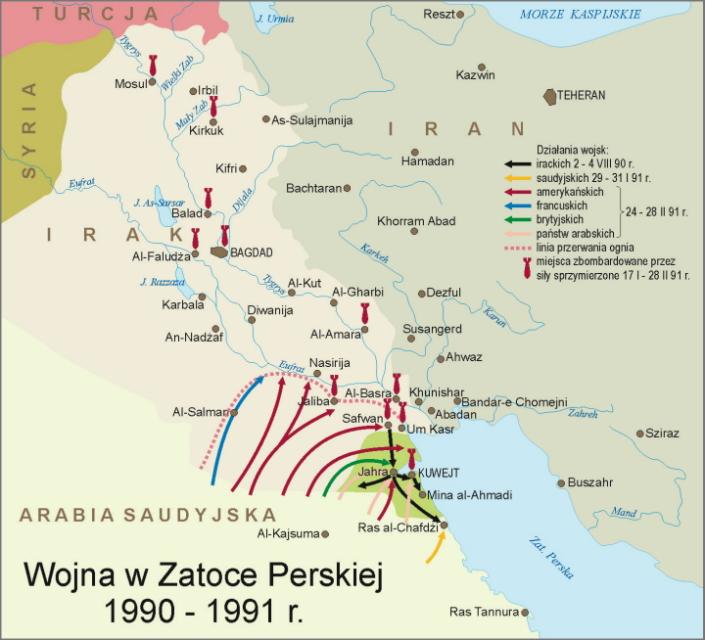
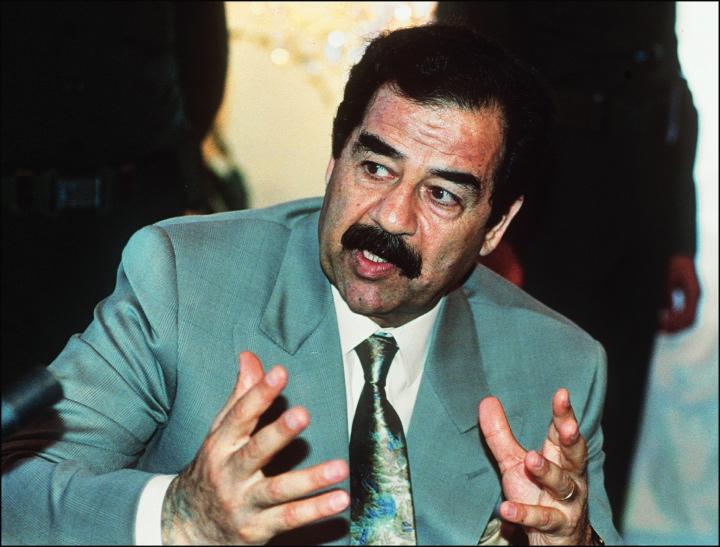
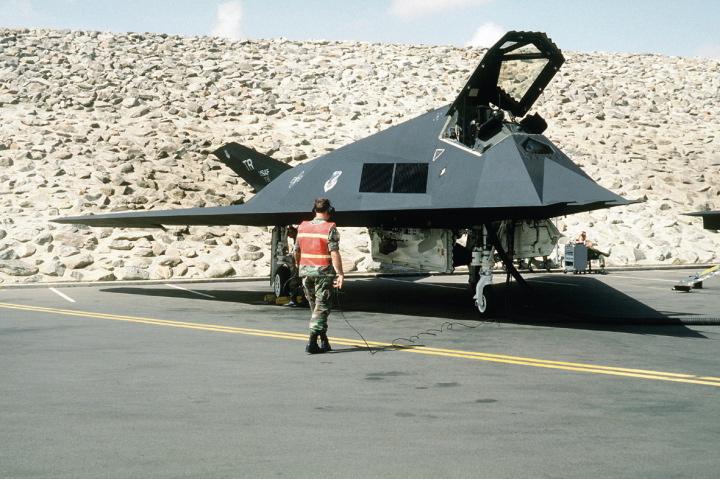
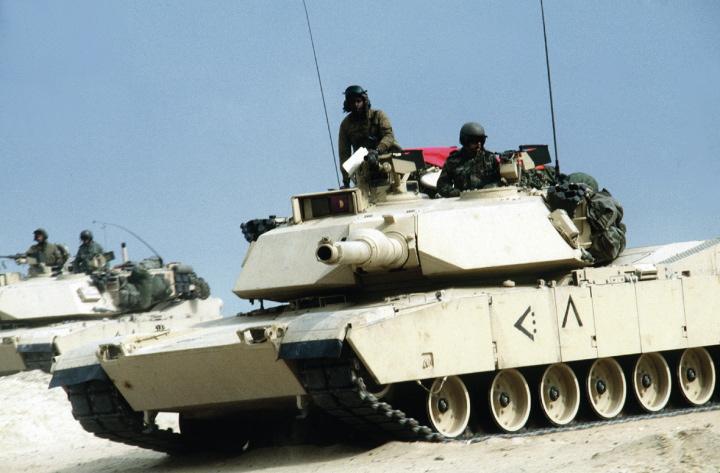
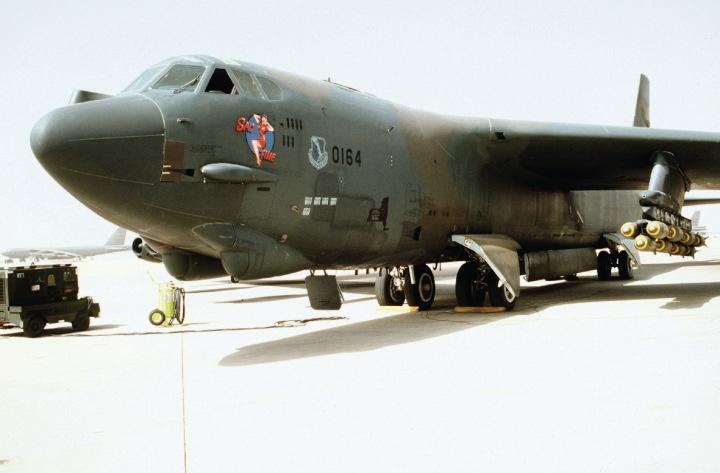
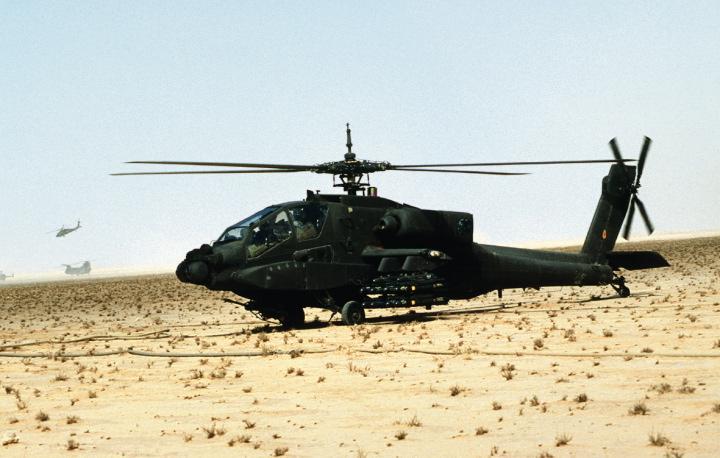
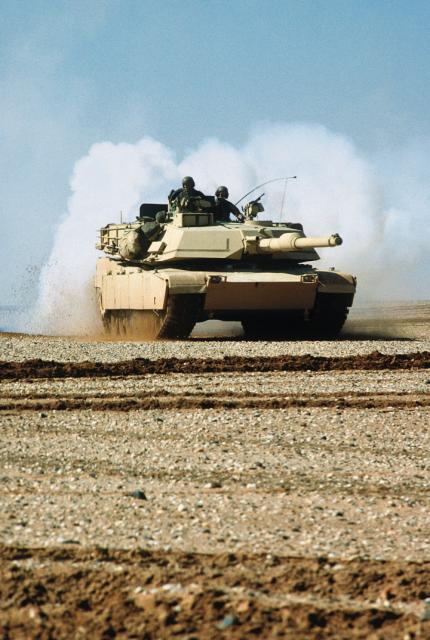

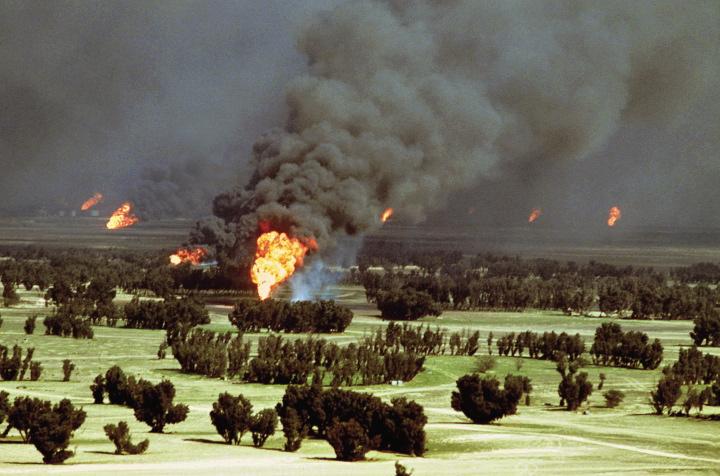
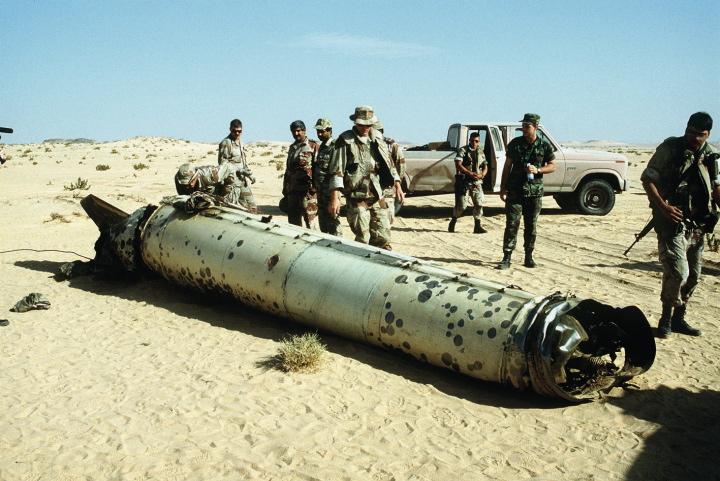
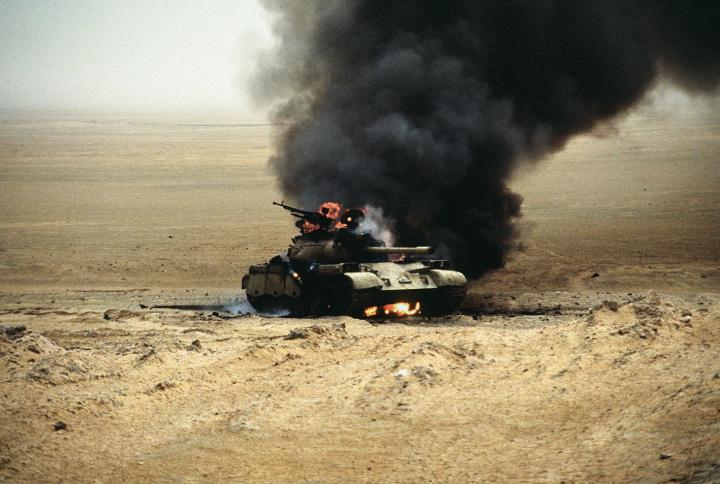
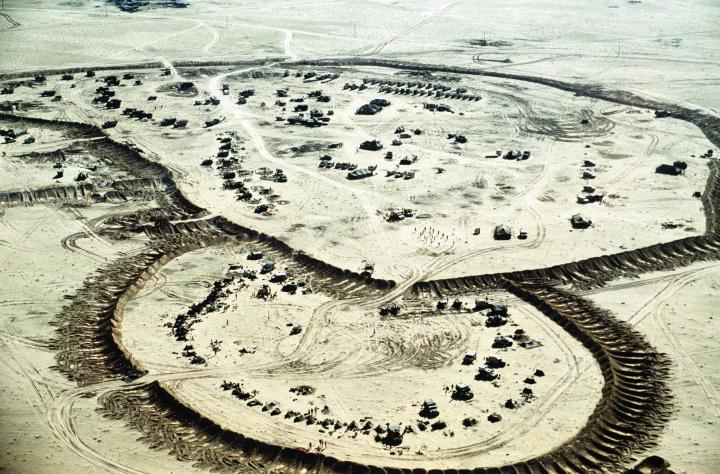
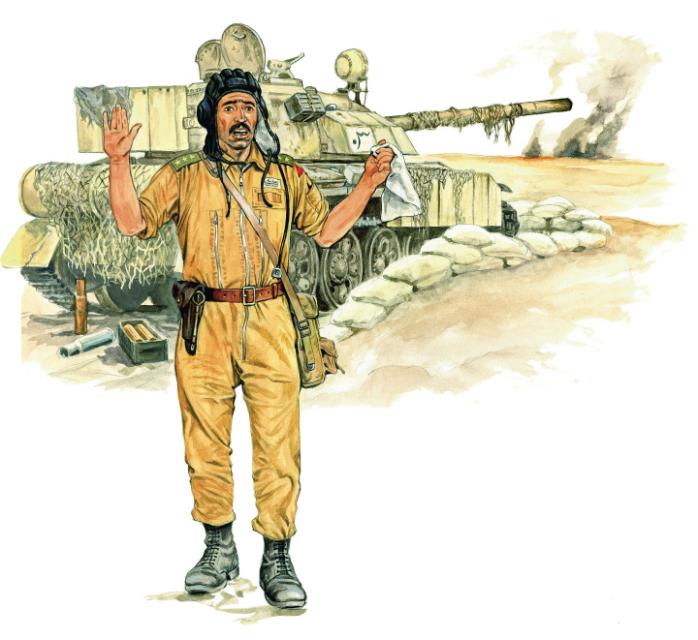

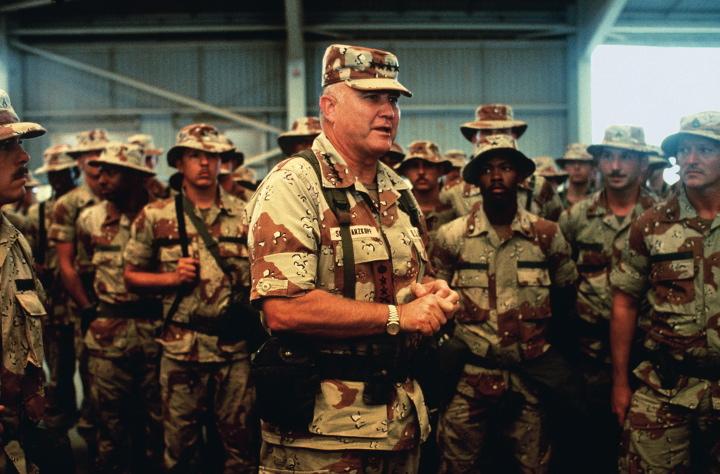
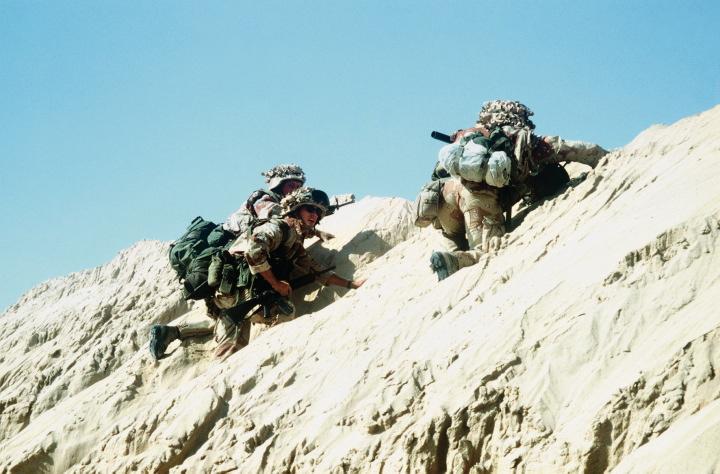
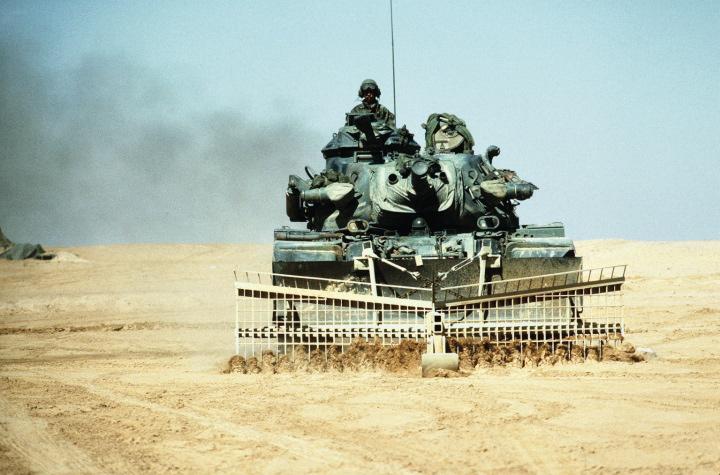
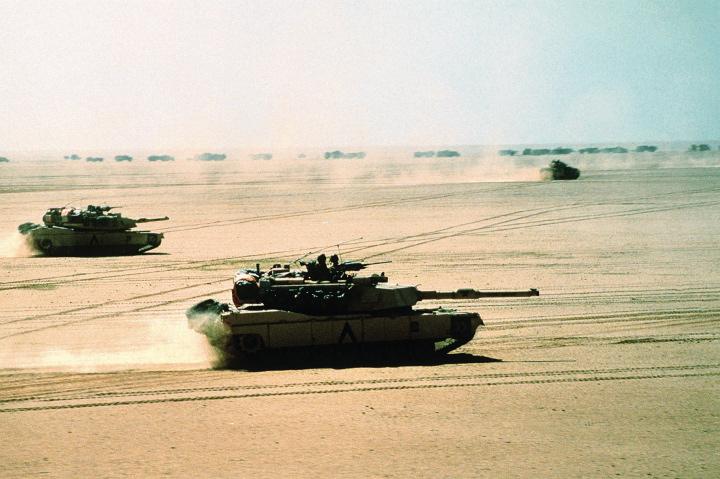
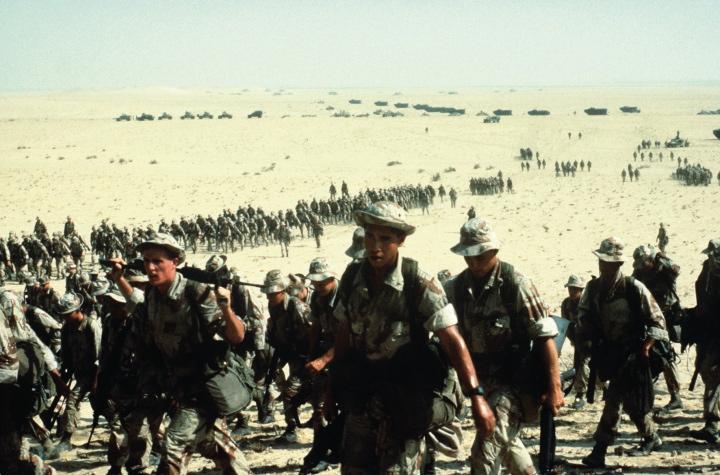
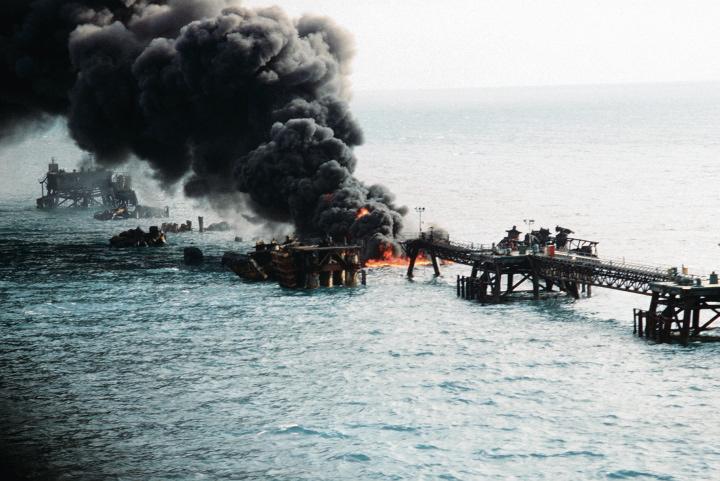
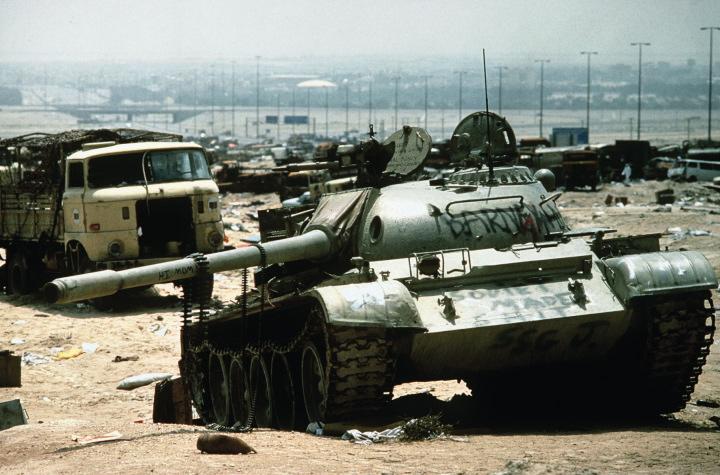

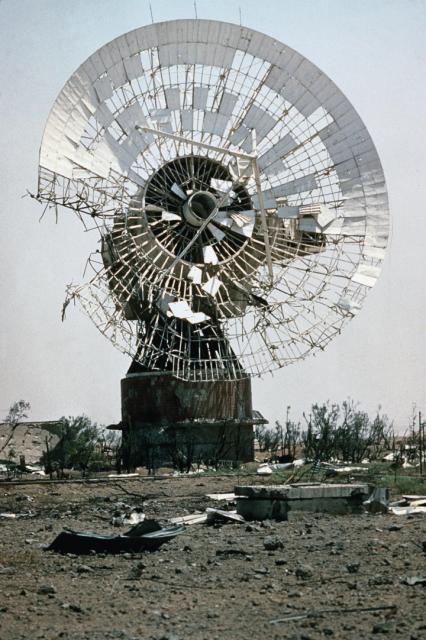
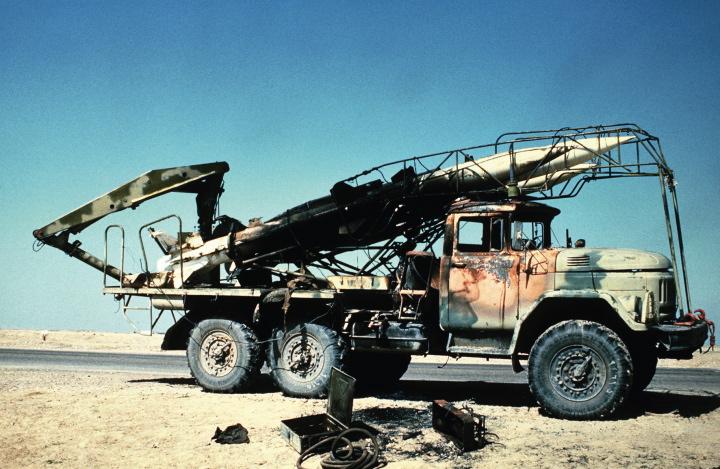


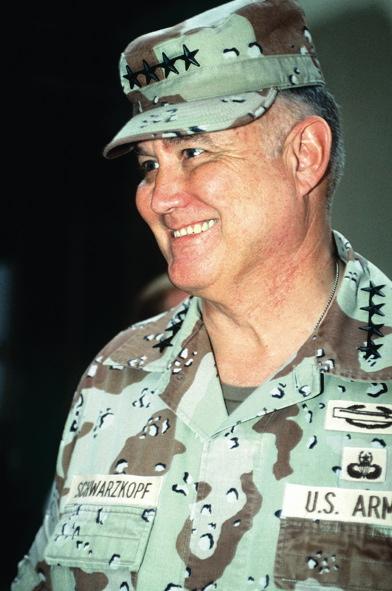
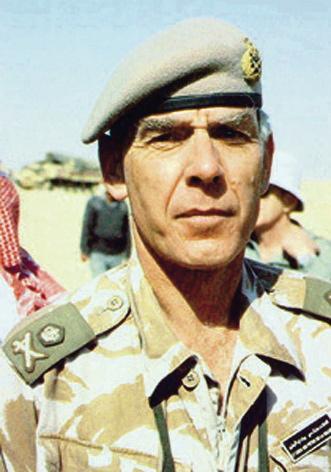
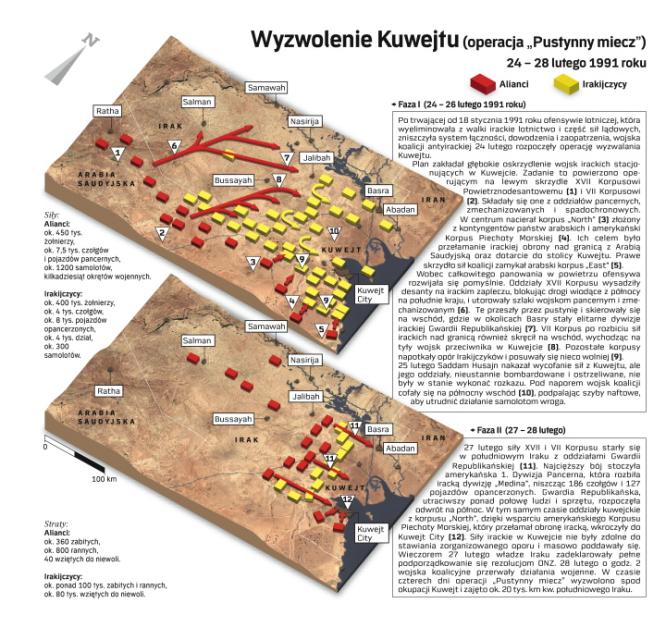
No comments:
Post a Comment